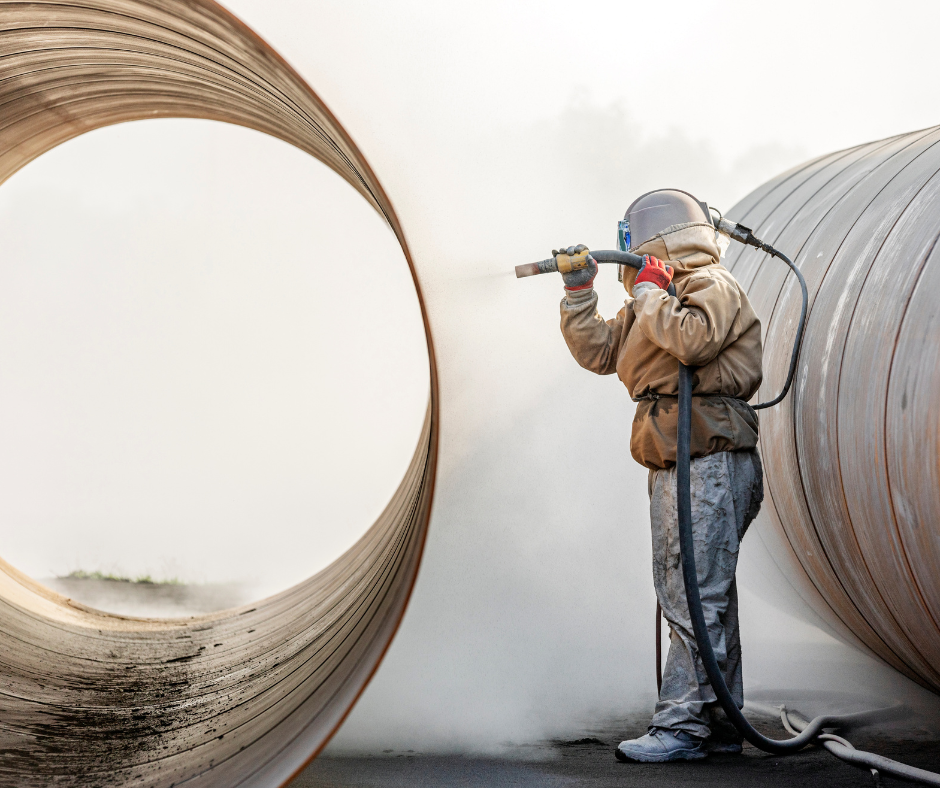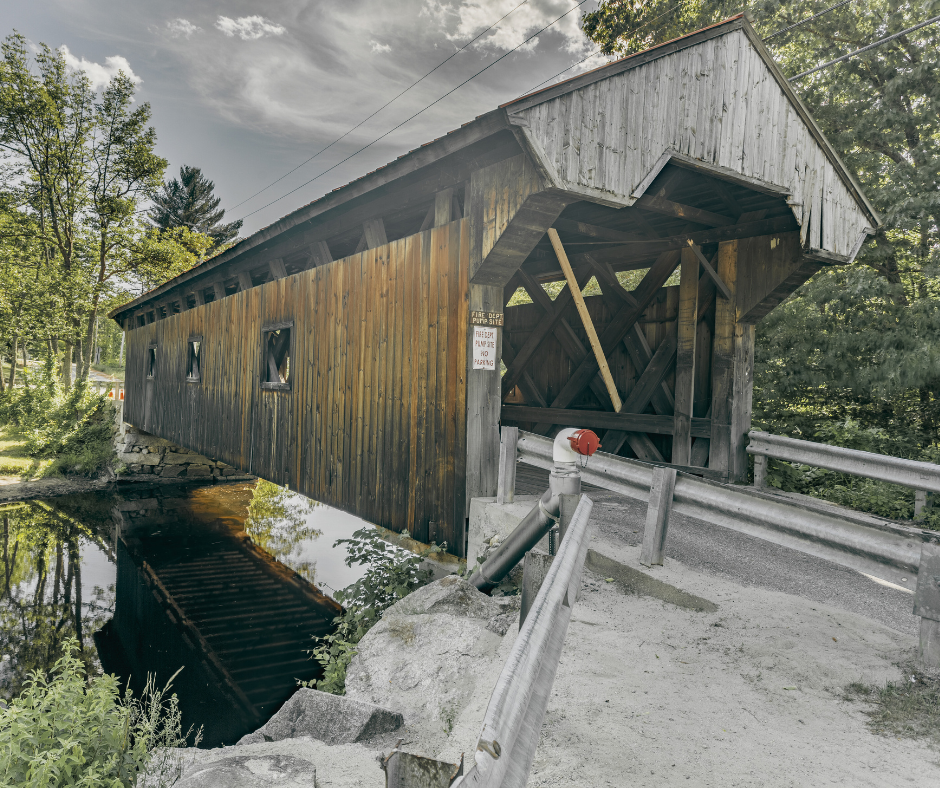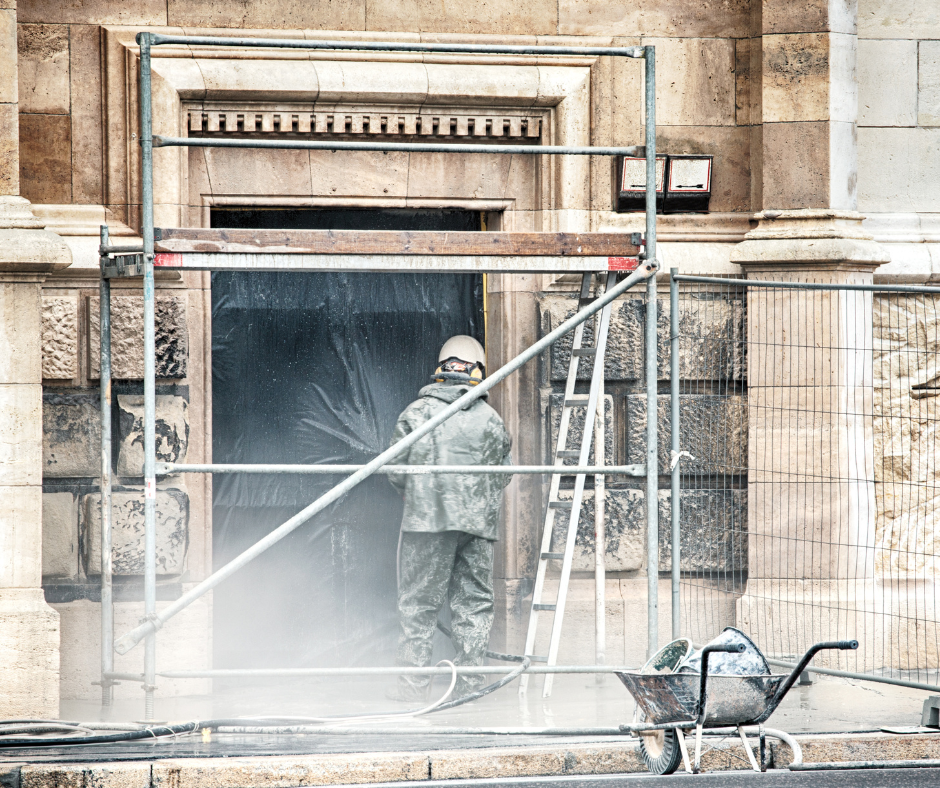

The Surprising Application of Dry Ice Blasting Technology in Historic Preservation
Summary
Dry ice blasting, a minimally abrasive cleaning method using frozen carbon dioxide pellets, offers unique advantages for historic preservation. Its lack of harsh chemicals, negligible secondary waste, and gentle nature make it suitable for many delicate historical materials. However, understanding its limitations, the importance of proper technique, and potential safety considerations is crucial for successful and responsible application in the restoration field.
Reflection Questions
- How does dry ice blasting compare to traditional cleaning methods in terms of environmental impact and preservation of materials?
- What are the limitations and challenges of implementing dry ice blasting in historic preservation, especially concerning different materials?
- How might the advancements in dry ice blasting technology further enhance its application in preserving cultural heritage?
Journal Prompt
Reflect on the importance of preserving historical artifacts and structures. Consider the balance between using innovative technologies and maintaining the authenticity and integrity of these items. Write about how you think modern methods like dry ice blasting could impact the future of historical preservation.
Dry ice blasting, a technology that utilizes frozen carbon dioxide pellets propelled at high speeds to clean surfaces, is gaining recognition for its application in historic preservation. Unlike conventional cleaning methods, it is not nearly as abrasive, does not involve harsh chemicals, and leaves no secondary waste, as the dry ice sublimates upon contact. This method is particularly beneficial for delicate and aged materials commonly found in historic sites and artifacts. Its efficacy in removing contaminants such as paint, mold, and soot without damaging the underlying surface is revolutionizing the restoration practices of historical sites and artifacts. In this article, we consider how dry ice blasting machines are transforming the field of historic preservation, offering an efficient, environmentally friendly, and safe alternative to traditional architectural restoration techniques.
What is Dry Ice Blasting, and How Does it Compare to Other Cleaning Methods?
Dry ice blasting is a cleaning method that utilizes small pellets of frozen carbon dioxide (CO2). These pellets are propelled at high speeds onto the surface to be cleaned using compressed air. Upon impact, the dry ice sublimates (turns directly from solid to gas), lifting dirt and contaminants off the surface without abrasion. This process is particularly effective for removing built-up grime, paint, or other contaminants without damaging the underlying material.
While dry ice blasting is generally considered non-abrasive, this isn’t strictly true in all scenarios. It’s important to note that incorrect technique, excessive pressure, or prolonged exposure to fragile surfaces can cause very slight abrasion.
The invention of dry ice blasting is generally attributed to engineers at Lockheed Martin in the 1980s, but other companies also contributed over several decades. They developed this technique as a non-abrasive method to clean aerospace components. This innovative approach stemmed from the need for a cleaning method that wouldn’t damage sensitive equipment or leave behind harmful residues. The technology has since evolved and is now used in various industries, including historic preservation, automotive, and manufacturing. Dry ice blasting is valued for its effectiveness, environmental friendliness, and the fact that it leaves no secondary waste.
Comparison with Traditional Cleaning Methods


Unlike traditional cleaning techniques, such as sandblasting or chemical solvents, dry ice blasting is non-abrasive and does not involve harsh chemicals. Traditional methods often leave behind secondary waste or can damage the surface being cleaned, particularly if it is delicate or aged. Alternatively, a dry ice blasting machine offers a more gentle yet effective alternative, preserving the integrity of the surface while ensuring thorough cleaning.
Dry Ice Blasting vs Sand Blasting
In contrast, sand blasting involves blasting sand particles against a surface at high pressure. This method is highly abrasive and can quickly remove coatings and contaminants but may damage the surface or alter its texture.
Sand blasting creates dust and secondary waste, requiring containment and cleanup, and poses health risks if inhaled. It is typically used for heavy-duty cleaning, rust removal, and surface preparation in industrial settings.
Dry Ice Blasting vs Soda Blasting
Soda blasting, which uses sodium bicarbonate (baking soda) particles blasted at high pressure, strikes a balance between abrasiveness and gentleness. It’s less abrasive than sand blasting but more so than dry ice blasting and can remove paint and contaminants without damaging the substrate.
Soda blasting generates secondary waste but is less hazardous than sand blasting, with the added benefit of being non-toxic and environmentally benign. It’s effective for applications like mold remediation, fire damage cleanup, and graffiti removal on resilient surfaces.
Dry Ice Blasting vs Abrasive Blasting
Abrasive blasting, including other media like walnut shells and glass beads, involves various abrasive materials blasted at surfaces. The abrasiveness varies depending on the media used, from medium to high.
This method can either clean or profile a surface but may cause damage or wear depending on the intensity. Like sand blasting, it typically creates secondary waste and may require careful disposal of the used media. Its applications range from gentle cleaning with softer media to aggressive surface preparation with harder media.
Environmental Benefits and Safety Features
Dry ice blasting is environmentally friendly, as it does not produce secondary waste materials and uses recycled CO2, reducing the overall carbon footprint. The absence of harsh chemicals in the process eliminates the risk of chemical contamination, making it safer for both the environment and the operators. Additionally, since the dry ice sublimates upon contact, there is no residue to dispose of, simplifying the cleanup process and further minimizing environmental impact.
Advantages of Dry Ice Blasting in Historic Preservation


Dry ice blasting is inherently non-abrasive, making it exceptionally suitable for cleaning delicate surfaces commonly found in historical artifacts and structures. This characteristic is crucial in historic preservation where the integrity of often fragile and aged materials must be maintained. The process allows for effective cleaning without the risk of eroding or damaging these surfaces, which is a common concern with more abrasive techniques like sandblasting.
Fuel your creative fire & be a part of a supportive community that values how you love to live.
subscribe to our newsletter
*please check your Spam folder for the latest DesignDash Magazine issue immediately after subscription


Chemical-Free and Environmentally Friendly: Eco-Sustainability of the Process
The method is free from harsh chemicals and uses recycled carbon dioxide, thus minimizing environmental impact. Unlike traditional cleaning methods that often involve chemical solvents, dry ice blasting offers a more eco-friendly solution.
It eliminates the risk of chemical residues that can harm the environment or pose health risks to restoration professionals. Moreover, as the dry ice sublimates, it leaves no secondary waste, reducing the need for waste disposal and further enhancing its environmental sustainability.
Versatility: Effectiveness on Various Materials Like Stone, Brick, and Marble


Dry ice blasting is highly versatile and effective on a wide range of materials. It can be used on stone, brick, marble, terra cotta, wood, and more, which are commonly found in historic buildings and artifacts. The versatility of this cleaning process allows for the cleaning and preservation of various types of historical structures and surfaces with a single method, ensuring their historical integrity and aesthetic value are maintained.
Efficiency and Cost-Effectiveness
Dry ice blasting is not only effective but also efficient in terms of time and cost. Compared to traditional methods, it often requires less labor and time, leading to lower overall restoration costs. The absence of secondary waste and the reduced need for cleanup further diminish operational expenses. This efficiency makes dry ice blasting a cost-effective choice for large-scale restoration projects, where minimizing both time and financial resources is crucial.
Case Study: The Restoration of the Kissing Bridge in Waterloo, Ontario, Canada


The Kissing Bridge, also known as the Covered Bridge, is a historic landmark in Waterloo, Ontario, constructed in the early 1880s. This bridge, renowned for its tradition where the toll was purportedly a kiss, plays a significant role beyond its transportation function, contributing to the region’s cultural heritage. Over time, the bridge underwent several modifications, including the replacement of wooden trusses and the addition of materials like stone, steel, asphalt, and concrete to maintain its structural integrity and originality.
In a major restoration project, dry ice blasting was employed to preserve and restore the bridge. The method was chosen due to its non-abrasive nature, ensuring that the original wood and other materials were not damaged during the cleaning process. The goal was to maintain the bridge’s aesthetic appeal and historical authenticity, which is crucial for attracting tourists and preserving the region’s history.
This restoration project exemplifies the effectiveness of dry ice blasting in maintaining historical landmarks. By using this method, the bridge was cleaned and preserved without altering its historical integrity or aesthetic value, ensuring that it continues to be a significant part of the Waterloo region’s heritage and a point of attraction for visitors.
Challenges and Limitations of Using Dry Ice Blasting Equipment on Historic Buildings & Monuments


While dry ice blasting is celebrated for its non-abrasive nature and environmental friendliness, it does have certain limitations. One of the primary challenges is the upfront cost, as the equipment and materials (especially the dry ice pellets) can be more expensive compared to traditional methods. Additionally, the process requires specialized training and safety precautions due to the extreme cold of the dry ice and the potential risk of asphyxiation in poorly ventilated areas. These factors can limit its accessibility and feasibility, especially for smaller or budget-constrained restoration projects.
accepting new mastermind applications
For Fall ’24
Get unstuck. Find fulfillment. Rediscover your passion for the design industry we all love! Be one of the first to join our next exclusive, curated cohort of creative women and find support like you’ve never had before.


Considerations for Use on Different Historical Materials
Dry ice blasting is generally safe for a wide range of materials, but there are exceptions. It may not be suitable for very soft or porous materials, where trapped CO2 gas might cause damage. There’s also a risk of thermal shock in some materials due to the extremely low temperature of the dry ice. This could lead to micro-fracturing in certain types of stone or ceramics. Therefore, it’s crucial to evaluate the compatibility of dry ice blasting with the specific materials of each historical artifact or structure before proceeding.
Limitations in Detail Cleaning


While dry ice blasting is effective for general cleaning and removing layers of contaminants, it may not be as precise in cleaning intricate details or crevices in some artifacts. This is because the size of the dry ice pellets and the nature of the blasting process might not allow for the fine, detailed work that some restoration projects require. Dry ice cleaning can be used on certain objects and materials, but there are limitations in its effectiveness. However, specialized nozzles and lower pressures can increase precision, making it suitable for some detailed work.
For example, conservators at the Wallace Collection in Central London recently cleaned chain mail helmets. With their methodology, there was little risk of abrasion, but certain coatings could not be removed completely solely with ice blasting. In their paper about the project, the conservators concluded that “Dry ice cleaning can sometimes be a lengthy endeavor, but benefits such as sustainability and reduction in exposure to toxic solvents can make it worthwhile to pursue.”
Future Prospects of Dry Ice Blasting in Historic Preservation and Beyond
The use of dry ice blasting in preservation is likely to grow, particularly in areas where environmental concerns and the preservation of original materials are paramount. As awareness of this technology increases, its application may expand beyond historical buildings and artifacts to include a broader range of cultural heritage objects. Emerging trends also suggest a growing emphasis on preserving not just the structure but also the original patina and aging, which dry ice blasting can achieve without altering the surface appearance.
Potential Future Applications


Future applications of dry ice blasting could extend to more specialized areas of preservation, such as restoring delicate manuscripts, textiles, or even artworks where traditional methods are too harsh. The technology might also find increased use in archaeological contexts, where removing years of sediment or encrustation without damaging the underlying artifact is critical. As global awareness of cultural heritage preservation increases, dry ice blasting could play a vital role in more diverse and challenging restoration projects.
Evolution of the Technology
The technology behind dry ice blasting is likely to evolve to become more precise, with advancements in nozzle and blast media design to allow for more delicate work. There could also be developments in making the technology more accessible and cost-effective, broadening its appeal to a wider range of preservation projects. Innovations may include more efficient dry ice production methods, reduced equipment costs, and enhanced safety features, making it a more practical option for various conservation scenarios.
The future of dry ice blasting in preservation looks promising, with potential for broader application and technological improvements that could further enhance its effectiveness and accessibility in the field of historic preservation.
Final Thoughts on the Use of Dry Ice Blasters in Preservation and Restoration


The ability of dry ice blasting to gently remove contaminants from a variety of materials without damaging the underlying surfaces has made it an invaluable tool in restoring and preserving historical artifacts and structures. From the restoration of the Kissing Bridge in Waterloo, Ontario, to its application in various other historical sites, dry ice blasting demonstrates its versatility and effectiveness.
However, considerations of cost, suitability for different materials, and the need for specialized equipment and training highlight that this method, like any other, requires careful consideration and planning. Looking to the future, the potential for this technology to evolve and become more accessible promises even greater contributions to the preservation of cultural heritage. The growing use of dry ice blasting underscores the importance of harnessing innovative methods and rejecting more aggressive cleaning so we can maintain the integrity and beauty of our historical legacy for future generations.
Design Dash
Join us in designing a life you love.
-
The Friendship Breakup: How to Let Go of Toxic Relationships Gracefully
A friendship breakup can be so much harder than a romantic breakup. Learn how to navigate the grief, set boundaries, and rebuild.
-
Designing a Morning Routine Based on Your Chronotype (And Why It Works)
Learn how to align with your natural energy patterns and transform your mornings by creating a routine tailored to your chronotype.
-
Why ‘Ghosting’ at Work Won’t Work: How to Gracefully Decline Social Invitations
Instead of ghosting at work, learn how to gracefully say no, set boundaries, and maintain professional connections without burning out.
-
The Joy of Missing Out: How to Embrace JOMO and Reclaim Your Time
The Joy of Missing Out (JOMO) can help you reclaim your time! Learn how to prioritize what matters, embrace intentional living, and balance your busy life with actionable tips for both personal and professional well-being.
-
Why Everyone Should Consider Couples Therapy—Even When Things Seem Fine
Strengthen your relationship with couples therapy—even when things seem fine. Therapy can improve communication and deepen connection.
-
End-of-the-Year Reflection Questions Before 2025: What Worked & What Didn’t
Let’s work through end-of-the-year reflection questions—celebrating what worked, recognizing what didn’t, and setting intentions for 2025.








